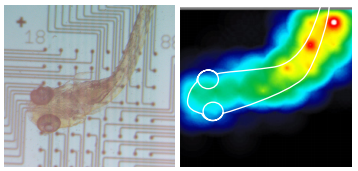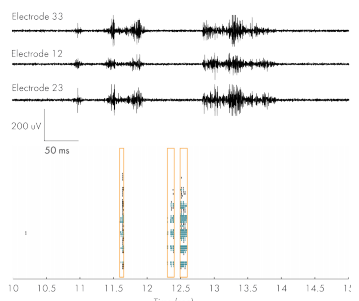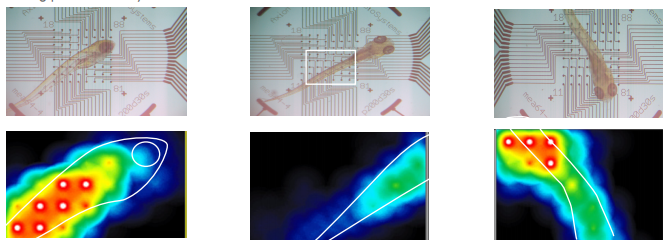Advance your phenotype screening
Advantages of Zebrafish Assays
The zebrafish model evaluates the connection of whole organ systems and is amenable to high throughput screening. With significant conservation of human protein targets, physiological, and pharmacology, zebrafish models have been adopted for toxicology and drug discovery applications. Furthermore, the possibility for genetically engineered models and behavioral screens positions the zebrafish model to impact applications of neural disease.

Whole organism electrophysiology
Axion BioSystems’ Maestros are well-suited for studying zebrafish electrophysiology. The Maestro MEA systems detect the electrical activity from the brain and spinal cord of the zebrafish, adding readouts of functional electrophysiology to standard zebrafish assays. The integrated physiology of the zebrafish enables the study of other organ systems in addition to the central and peripheral nervous systems.

Scale up organism electrophysiology
Zebrafish electrophysiology is captured consistently across wells and in relation to the orientation of the organism in the well, providing a reliable assay for compound screening. Zebrafish are immobilized in agar but not paralyzed, eliminating potential assay confounds.

Re-define the zebrafish assay with the Maestro Pro and Lumos
The Maestro multiwell MEA platforms provides researchers with an easy-to-use, benchtop assay for the acquisition and analysis of neural signaling. With an industry-leading 768 electrodes, data is recorded from multiple sites within each well to deliver insight at a network level that can’t be achieved by other in vitro techniques. Transparent MEA plates and the AxIS software suite streamline the assay process, while the Lumos opens new avenues with optogenetics.
The Axion Advantage
The Maestro platforms are the highest throughput MEA, providing access to network level information and high-quality, reliable data
- Noninvasive and label-free recording allows measurement of acute and chronic responses
- Zebrafish is an intact system, enabling the study of whole-organism electrical activity
- Genetic engineering enables zebrafish models of human disease for high-throughput screening
- Electrophysiologic read-outs compliment existing assays in toxicology and drug discovery
- Transparent plates improve efficiency with multiplexed assays
- The Lumos delivers multiwell optical stimulation to facilitate optogenetic or behavioral assays




